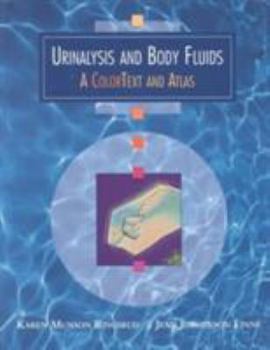Urinalysis and Body Fluids: A Color Text and Atlas
Select Format
Select Condition 
Book Overview
. The text is 10% clinical lab procedure, safety and quality assurance, 70% urinalysis (physical, chemical and microscopic examination) and 20% miscellaneous body fluids cerebrospinal, synovial, serous, seminal, amniotic).
. The atlas chapter is not set apart from the rest of the book, but is integrated into the discussion of urine sediment constituents (casts, cells, and crystals).
. Pedagogy: Chapter outlines, highlighted key terms, over 100 self assessment questions with answer key, 15 detailed case studies with answer key, 17 laboratory procedures in How-to format, consistent use of tabular material including boxes, tables, and algorithms, quick-find index to art, glossary with abbreviations.
. The atlas chapter is not set apart from the rest of the book, but is integrated into the discussion of urine sediment constituents (casts, cells, and crystals).
. Pedagogy: Chapter outlines, highlighted key terms, over 100 self assessment questions with answer key, 15 detailed case studies with answer key, 17 laboratory procedures in How-to format, consistent use of tabular material including boxes, tables, and algorithms, quick-find index to art, glossary with abbreviations.
Format:Hardcover
Language:English
ISBN:0801670438
ISBN13:9780801670435
Release Date:January 1995
Publisher:Mosby
Length:272 Pages
Weight:1.39 lbs.
Dimensions:0.5" x 8.5" x 11.0"
Customer Reviews
2 ratings
Extremely Good Photomicrographs
Published by Thriftbooks.com User , 22 years ago
I find that this text/atlas is perhaps THE best I have seen for identification of the various constituents seen in urine/body cavity fluids. This book is currently used in the MLT program as well as used in a large 900 bed hospital. I highly recommend this book.
excellent resource
Published by Thriftbooks.com User , 24 years ago
This is indeed a book any urine dept should have on the reference shelf. The atlas is outstanding and the text is extremely informative and educational.






